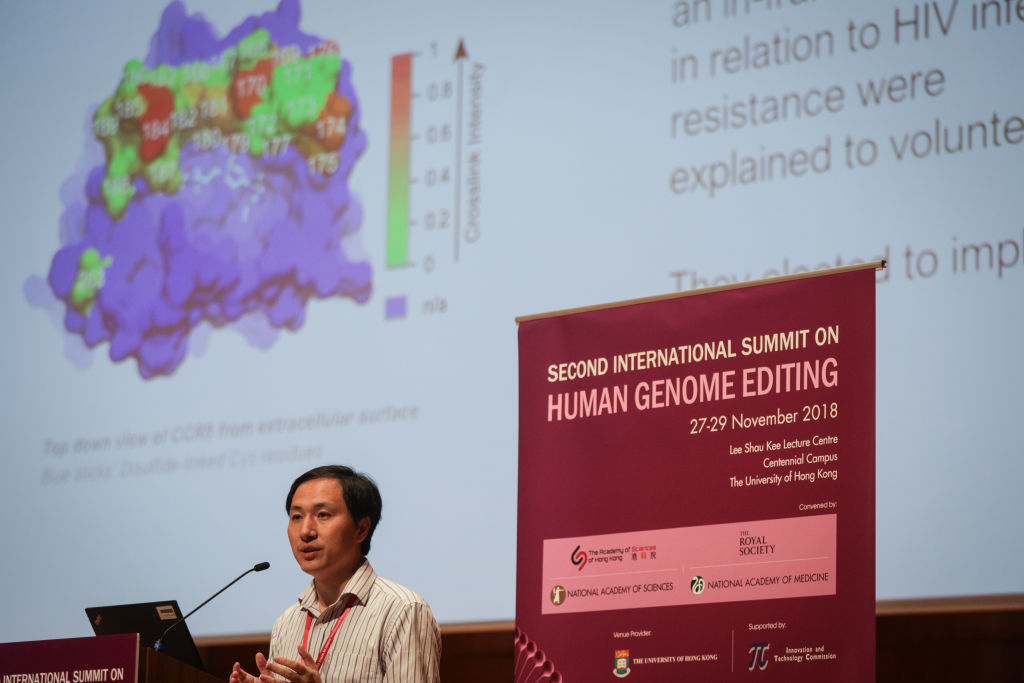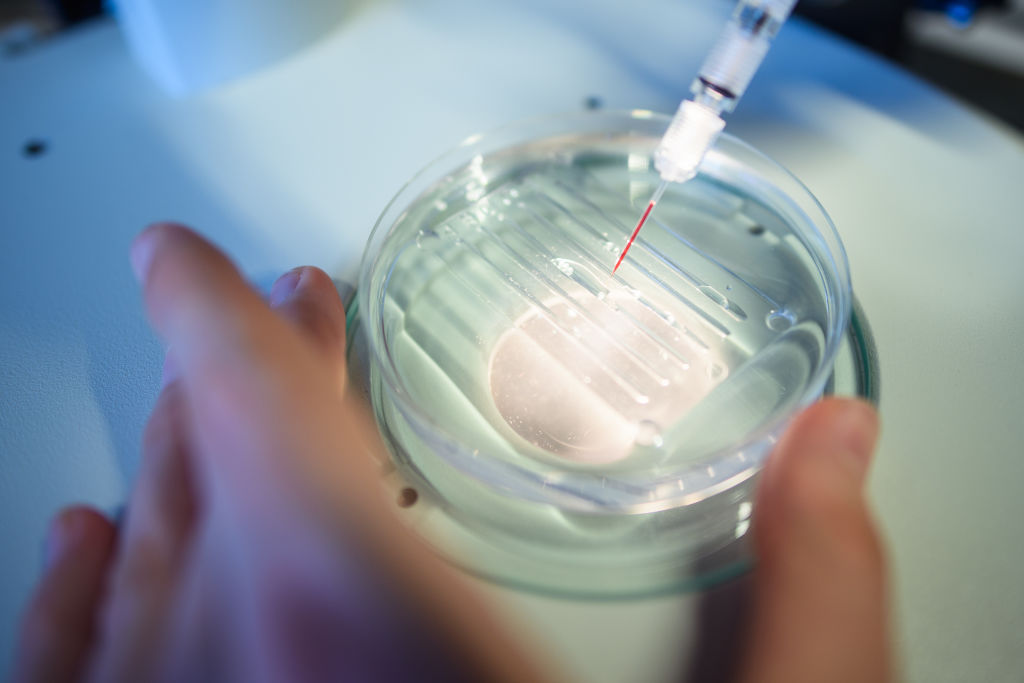
Health & Medicine
Stumbling into the brave new world of gene editing

Recent claims that Chinese twins have been born with intentionally modified genomes mean the legislation governing this controversial issue needs careful examination
Published 20 December 2018
In November this year, the scientific community reacted with shock to reports of the birth of the first ever genetically modified babies.
Presenting his findings at the Second International Summit on Human Genome Editing, Associate Professor He Jiankui (from Southern University of Science and Technology in China) claimed that twins Lulu and Nana had their genomes intentionally modified by the CRISPR-cas9 system, with the intention of making them resistant to HIV. It is unclear whether the modification was successful in making them resistant.

The study has been thoroughly criticised as ‘unethical’, ‘unconscionable’, and ‘monstrous’. While genome editing on embryos for research purposes has enormous potential and has been generally endorsed by various research groups, it is nearly universally agreed that the technology is far too young to be used for reproductive applications.
The news about the twins has left many wondering about the legal status of embryonic gene editing. Was the modification of Lulu and Nana in China legal, and could the same thing happen In Australia?

Health & Medicine
Stumbling into the brave new world of gene editing
In our recent paper published in the Journal of Law and Medicine, we examine the legal status of embryonic genome editing in Australia and compare it to the regulations around the world. We found ambiguity in existing legislation, which needs to be addressed.
In China, there is no national legislation covering embryonic genome editing. However, Dr He’s work was in breach of various guidelines, including the Ethical Guiding Principles on Human Embryonic Stem Cell Research and the Guidelines on Human Assisted Reproductive Technologies, the latter of which prohibits “manipulation of the genes in human gametes, zygotes or embryos for the purpose of reproduction”.
However, the enforcement and sanctioning of these guidelines is inconsistent and depends on the capabilities and willingness of provincial governments. It will be interesting to see what punishment, if any, Dr He receives. Currently, there are rumours he is under house arrest.
Two principle pieces of legislation cover genetically modifying embryos in Australia – the Research Involving Human Embryos Act 2002 (Cth) (RIHE Act) and the Prohibition of Human Cloning for Reproduction Act 2002 (Cth) (PHCR Act).
The RIHE Act prohibits the use of embryos for research without a licence and establishes a licensing system for their creation and use. The PHCR Act prohibits certain practices used to create embryos unless a licence is obtained (like hybrid embryos) and completely prohibits other practices involving embryos (like creating a human embryo purely for research purposes).

In particular, section 15 of the PHRC Act specifically prohibits a person from altering the genome of a human embryo in such a way that the alteration is heritable by descendants and the person intended this to be so. This clearly prohibits the use of genome editing in reproduction.
If Dr He had modified Lulu and Nana in Australia, he would face 15 years in prison.
However, whether section 15 also prohibits any research that utilises genome editing is unclear. The prohibition in section 15 may be interpreted in two ways.

Health & Medicine
The simple, ethical case for gene editing
A narrow interpretation of section 15 prohibits genome editing only in cases where it is carried out for reproductive purposes. This is based on the view that, when a researcher conducts research on an embryo, they have no intention for any genomic alterations to be inherited by descendants of the embryo because they don’t intend to implant the embryo. Thus the second limb of the prohibition in section 15 wouldn’t be satisfied in the case of embryonic genome editing for research.
However a broad interpretation of section 15 which prohibits genome editing for both research and reproductive applications, is also available from the language of the Act. It could be argued that, although a researcher may never intend for a genetic alteration to be inherited, they may intend to make an alteration that is heritable in the sense that it is capable of being inherited if the embryo was implanted into a woman.
Ultimately the scope of the prohibition comes down to the meaning of ‘heritable’, which is not defined in the PHRCR Act.
How are we to decide between these interpretations? Some clues are provided by the legislative history of the PHCR Act.

In 2005 a Legislative Review Committee (the Lockhart Committee) reviewed the PHCR Act and RIHE Act and made recommendations to the Government, two of which were relevant to editing embryos:
Recommendation 10:
Implantation into the reproductive tract of a woman of an embryo carrying heritable alterations to the genome should continue to be prohibited.

Sciences & Technology
The tip of the CRISPR iceberg
Recommendation 26:
Creation of human embryos using the genetic material from more than two people, or including heritable genetic alterations, should be permitted, under licence, for research, training and clinical applications, including production of human embryonic stem cells, as long as the research satisfies all the criteria outlined in the amended Act and these embryos are not implanted into the body of a woman or allowed to develop for more than 14 days.
These recommendations can be taken to imply that the Lockhart Committee interpreted the predecessor to section 15 of the PHCR Act (which was in the same terms) as prohibiting research involving heritable genetic alterations and recommended the legislation be changed to allow such research.
In 2006, an amendment Bill was passed, which sought “to implement each of the Lockhart Review’s recommendations where a legislative response is required”. However, the terms of section 15 weren’t changed.
There seem at least two explanations for this. One is that the government endorsed a narrow interpretation of 15, such that the section didn’t need amending to allow embryonic genome editing for research purposes. However, this isn’t articulated in any of the parliamentary materials surrounding the amendment Bill.

Alternatively, there may have been an oversight in drafting the amendment Bill, which neglected to make the necessary amendments to section 15.
The fact that section 15 is currently ambiguous, depending on whether a narrow or broad reading is taken, indicates the need for legal reform. In our paper we suggest an additional paragraph is added to section 15 to ensure it is consistent with the recommendations of the Lockhart Committee:

Sciences & Technology
Genetic snip and snap
To avoid doubt, section 15 doesn’t prohibit a person altering the genome of a human cell in a heritable way where the person is authorised by a licence to do so, provided:
(i) the embryo will not be implanted into a woman; and
(ii) the embryo will be destroyed after 14 days.
Even if section 15 is amended as we suggest, genome editing research in human embryos will remain practically unfeasible in Australia. This is because of a provision in the RIHE Act, which only allows ‘excess’ embryos from in vitro fertilisation (IVF) procedures to be used for research.
Nearly all genome editing research in embryos carried out internationally takes place in zygotes – embryos at a single cell stage. In Australia most IVF clinics will grow the embryo to the blastocyst stage (when it contains 70–100 cells) before it is assessed for its appropriateness for implantation. At this stage the embryos are of limited value in genome editing research because it is very difficult to ensure that each separate cell is correctly edited.
So for genome editing research to become feasible in Australia, the RIHE Act would need to be amended to allow the creation of zygotes for research purposes. This raises a different set of ethical concerns.
Given the very fast development of genome editing technologies, it is crucial that the laws and regulation around them are clear, robust and consistent.
Even though genome editing for reproduction is rightly banned in Australia, we need to amend our laws so that they provide clear guidance around the legality of genome editing research.
Banner image: Shutterstock